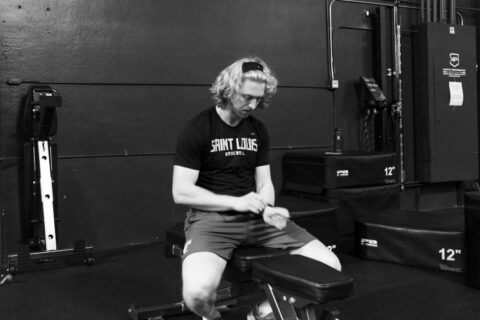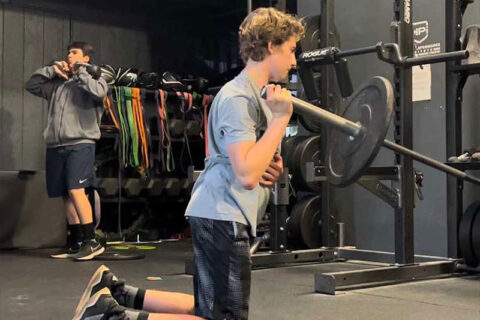Chasing Numbers – When Strength Should be a Tool, Not the Goal

My name is Dan Cabuling, I am the lead Strength and Conditioning Coach at The Kinetic Performance Institute. My job is to design strength and conditioning programs for clients of KPI. One of the most common questions our staff gets is “How much weight should I do?”
I typically respond with something sarcastic like “Heavy!” but the majority of the time, actually, I am sarcastic the majority of the time. The real answer is as much as you can do with perfect form. Athletes typically fall into two categories, one grabs too much weight and proceeds to have brutal form. The second grabs too light of a weight, as they see it as an opportunity to take it easy. Both athletes end up falling short of the purpose of the weight room.
Which is a great question to ask yourself, what do you think the purpose of the weight room is?
If we did a poll, “Get stronger!” is likely going to lead the pack. While being strong is a key performance indicator (KPI), it isn’t our #1 priority. The #1 priority is being good at your sport! There is limited time, energy, and money so you need to make sure everything you do is focused on helping you improve at your sport. Here is an actionable example, we utilize Trap Bar Deadlifts with every client who trains with us. We focus on developing “relative strength,” which for this exercise is 2x their bodyweight. This can look like the following:
150 lb athlete = 300 lb max deadlift
We don’t typically max out any of the lifts in the gym. The reward of knowing your max strength isn’t worth the risk of you getting hurt. So we stick to a rep range of 4-6 reps. That would be around 275-255 lbs for 4-6 reps. Once an athlete hits this number, they have displayed enough strength to suffice the relative strength goal. Relative strength is how much weight you can lift relative to your body size.
We focus on relative strength because the majority of our clients have never strength trained before and while strength is important KPI, we don’t believe it is the goal. It is a tool that you definitely need to have but if you continue to chase numbers in the weight room and take time, energy, and money away from other areas of development, you might end up being that player who can lift a lot of weight but doesn’t get a ton of playing time.
From a strength and conditioning perspective, our next step would likely be to transition to a single leg movement or increase the speed at which they move the weight on the bar. From a holistic player development perspective, we would take into account where they are at with the metrics we know have a stronger influence on their ability to succeed on the field, ie. speed, throwing/pitching velocity, exit velocity, etc. If we aren’t seeing improvements in those metrics we will make sure that strength isn’t the limiting factor.
Again, the goal is to be good at your sport! If you aren’t performing well on the field, strength could help you, but make sure you aren’t chasing numbers in the gym for the sake of chasing numbers.


